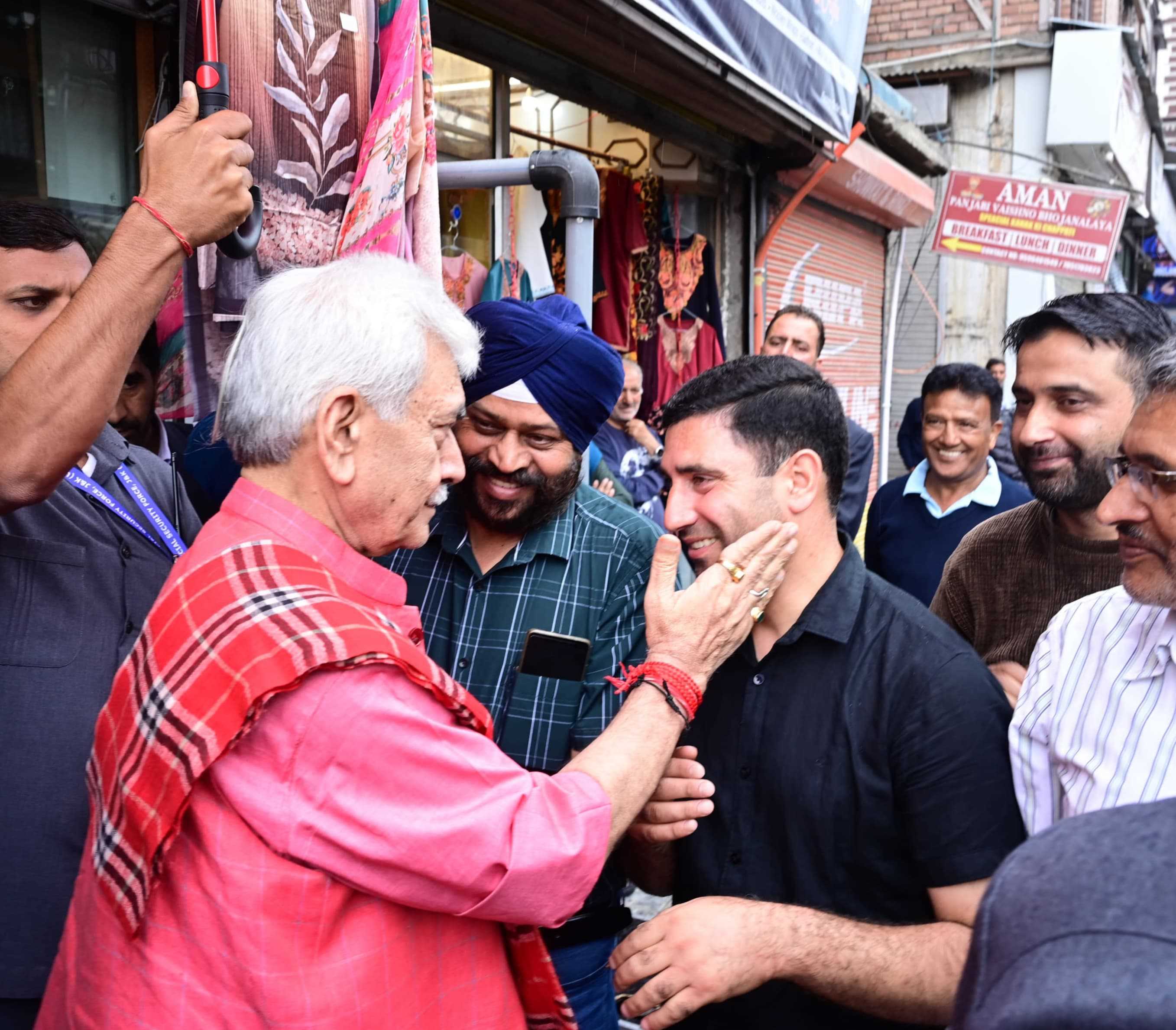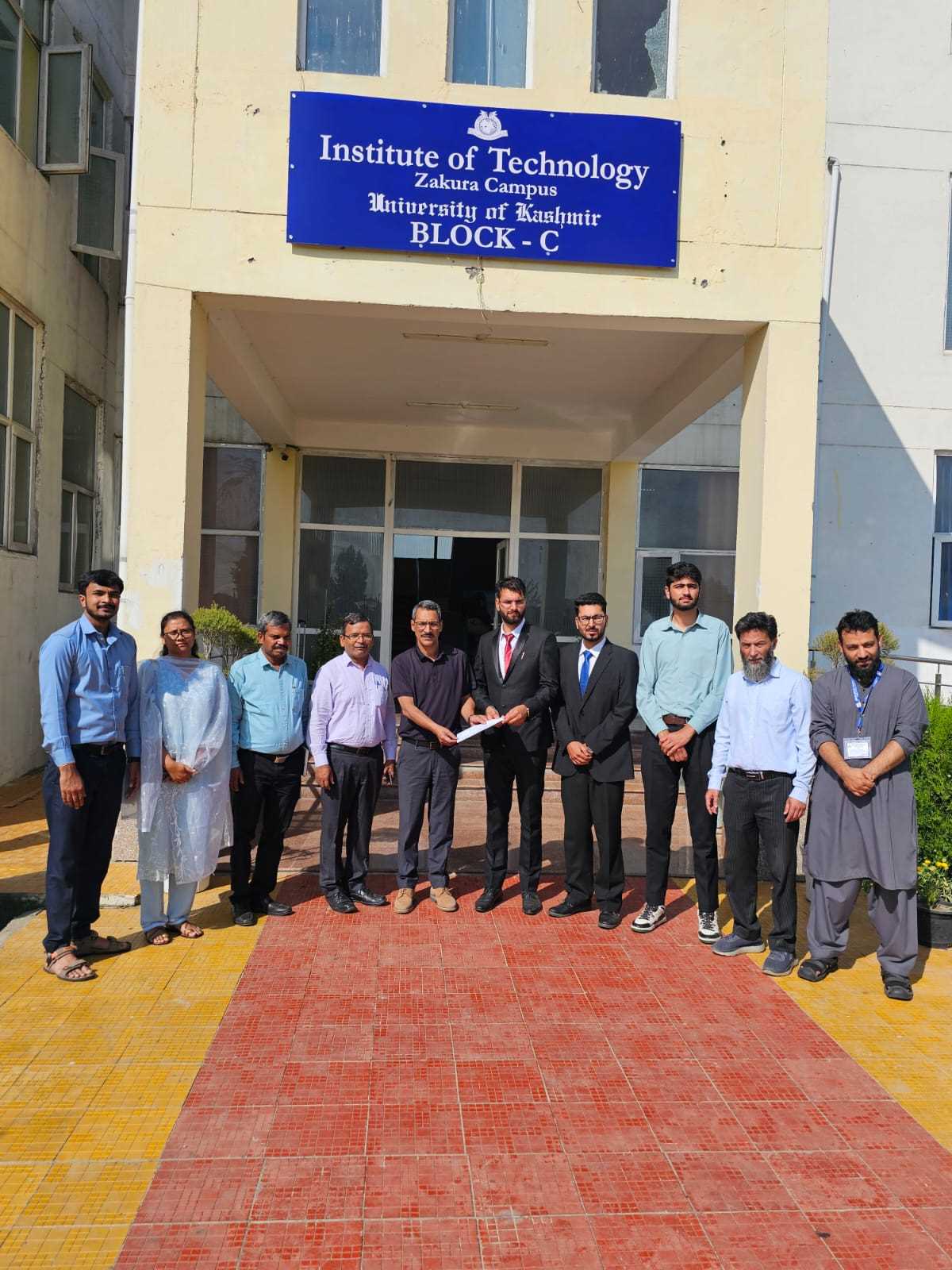Tourism in Kashmir is not merely an industry—it's a lifeline. From hoteliers and pony wallahs to street vendors and local craftsmen, thousands of families live off the regular stream of tourists. Such attacks as the one at Pahalgam are timed to hit this very lifeline.
By striking at tourists, terrorists hope to instill fear and discourage travelers from coming to the Valle
The recent Pahalgam terror attack has once again exposed the harsh realities of cross-border terror and Pakistan's active involvement in destabilizing the Kashmir Valley. While the Jammu and Kashmir people are striving for peace, progress, and normalcy, such attacks are a grim reminder of the forces from outside that desire to thwart this development. The planning and timing of the attack point towards a meticulously planned operation, one that definitely bears the hallmark of Pakistan-based terror outfits. From inflammatory speeches of Pakistani politicians to direct action of banned militant organizations based across the border, the evidence now points towards a trend that cannot be ignored. This article goes in-depth into the various dimensions of Pakistan's role in the Pahalgam attack, using the assistance of verified intelligence inputs, public debate, and expert analysis to reveal the multi-dimensional nature of this threat.
Jugular Vein Rhetoric from Pakistan Army Chief: Prelude to Violence
Just days before the Pahalgam attack, Pakistan's Army Chief General Asim Munir again called Jammu and Kashmir Pakistan's "jugular vein," a term Pakistani leader have used over the years to make claims of threats over the territory. Although such a statement might be interpreted as symbolic by some, on the ground in Kashmir it translates into a validation of extremist ideologies and violent agendas. Indian security agencies have time and again cautioned that such high-level provocative statements not only encourage terror groups but also give them pseudo-moral justification to carry out violence under the umbrella of ideological war.
The "jugular vein" metaphor is not just a political utterance—it often anticipates escalations along the Line of Control (LoC), either in terms of ceasefire violations or support to terror modules tasked with disrupting life in Kashmir. When Pakistan's top military command reaffirms its commitment to "liberate" Kashmir, it rings a straight bell with handlers across the border and their operators who carry out attacks like the one in Pahalgam.
Geostrategic Perspectives: Patterns, Pilgrimage, and Proxy War
In the opinion of most security analysts, the timing and location of the Pahalgam attack cannot be ruled out as a coincidence. With the Amarnath Yatra season approaching—a period when security deployment is at its peak and tourist arrival is at its peak—Pakistan-sponsored terror groups find an opportunity to cause maximum disruption.
Historically, episodes of violence peak during pilgrimage seasons. Analysts attribute a strategic pattern: disrupt economic activity, create fear among pilgrims and tourists visiting, create a narrative of unrest in kashmir and test the Indian state's capability to maintain its most sensitive area in control. In the case of Pahalgam, attackers deliberately targeted civilian zones, indicating their intent to cause chaos and not directly confront security forces. Intelligence intercepts suggest a clear coordination among handlers on the other side.
Pundits think that this attack is a part of an extended proxy war—an ongoing effort by Pakistan to maintain the Valley in a state of uncertainty and divert attention from its internal socio-economic issues.From a strategic perspective, such attacks enable Pakistan to maintain its Kashmir narrative at home while putting pressure on India abroad.
Terror Chiefs Spew More Hate
Saifullah Kasuri's Incendiary Rhetoric Notwithstanding global outrage and bans, the leaders of terror groups are still free to move about in Pakistan. Recently, Saifullah Kasuri, one of the close aides of Lashkar-e-Taiba, gave a poisonous speech paying homage to violence against India. The gathering, which saw scores of people and was said to have been organized with the connivance of local police, was live broadcast on social media platforms popularly employed for violent radicalization. Kasuri's jihadi-tinged speech remembered previous attacks and issued a warning of "more harsher blows" against India. The timing of his threats and the subsequent attack in Pahalgam has not gone unnoticed by Indian intelligence agencies. It is not an isolated incident; such public addresses have more than one function: they are recruitment campaigns, they are reaffirmations of ideological commitment by operational cadres, and they pass coded messages to sleeper cells. To the Kashmiris, these occurrences demonstrate only what they have always believed to be true—that terrorist infrastructure in Pakistan not only survives but thrives under the cloak of institutional protection.
Pakistan’s Bloody Track Record in Kashmir
Pakistan's involvement in fueling terrorism in Jammu and Kashmir is not new—it's a documented history of bloodshed. From the 1999 Kargil war to the 2019 Pulwama attack, Islamabad has used proxy fighters consistently to pursue its territorial goals.
The 2001 attack on the Indian Parliament, the 2008 Mumbai attacks, and the multiple incursions at Kupwara and Uri all carry the hallmark of Pakistan-trained militants. Probes into them have consistently revealed Pakistan-based training camps, networks of arms supply, and funding via fake charities and hawala networks.
Pahalgam adds to the list as the latest addition to this long list of intentional acts of violence. The trend is all too familiar: local agents radicalized by online and offline networks, equipped with advanced weapons, and led by handlers based in Pakistani territory. They are not autonomous actors; these are part of a larger, state-sponsored terror network.
Attack Tactics Mirror Previous Pakistan-Sponsored Assaults
The Pahalgam attack, although so far not preceded by public exposes of intercepted communications or confiscated weapons, has a familiar appearance to earlier terror strikes conducted by Pakistan-sponsored groups in Jammu and Kashmir. The script of the attack—quick, targeted, and meant to cause mass panic—follows a pattern observed common to earlier instances involving groups like Lashkar-e-Taiba (LeT) and Jaish-e-Mohammed (JeM). These groups, with ideological and logistical support flowing in from the other side of the border, have all along used similar guerrilla-style tactics to hit soft targets and then disappear into the local landscape.
The same modus operandi was used in the 2017 Amarnath Yatra attack, where militants fired on a bus carrying unarmed pilgrims in Anantnag, killing eight civilians. That attack also took place during the late evening hours, taking advantage of diminished security visibility and heavy civilian traffic to deliver a surprise ambush and getaway before reinforcements could launch a counterattack. Likewise, the 2016 Pampore attack on a CRPF convoy and the 2015 Udhampur attack were part of a trend of swift, high-intensity violence against non-combatants or lightly defended personnel, where psychological impact more than battlefield rivalry was the objective.
What unites all these attacks—and now the Pahalgam attack—is their strategic nature. These are not spontaneous or opportunistic attacks. Instead, they are well-planned ones, typically after weeks and months of reconnaissance, to attack specific weaknesses in the security apparatus. The target of Pahalgam, a tourism and pilgrimage site, reflects an old objective among Pakistan-sponsored terror groups: to damage the Valley's new image for peace and slow its return to normalcy by striking where civilians are most concentrated.
The aim here is not merely to kill but to instill fear in the day-to-day life of common citizens, especially when the region is witnessing economic activity, tourist inflow, or at least a semblance of public confidence in the government. These are the moments when Pakistan-based handlers typically like to activate sleeper cells or push infiltrators from the other side of the Line of Control (LoC). In the 2019 Pulwama suicide explosion, the assault on CRPF personnel happened during a period of relative peace, breaking peace just when stability was within sight.
Additionally, such incidents are most likely to take place where there is restricted access in the event of a response to an emergency, making logistical challenges for Indian security personnel. In Pahalgam, for example, the attackers targeted a region famous for its hilly terrain and forest cover—terrain which offers an easy escape route and renders pursuit futile. This is in line with past attacks in South Kashmir, particularly in Shopian, Anantnag, and Kulgam forest belts, where geography was used by militants to facilitate quick raids and escape to safe havens.
Why Terrorists Target Tourists: The Economic and Psychological Warfare
Tourism in Kashmir is not merely an industry—it's a lifeline. From hoteliers and pony wallahs to street vendors and local craftsmen, thousands of families live off the regular stream of tourists. Such attacks as the one at Pahalgam are timed to hit this very lifeline.
By striking at tourists, terrorists hope to instill fear and discourage travelers from coming to the Valley. The tactic is straightforward: damage the local economy, induce distrust among communities, and test the administration's capabilities in shielding civilians.
Bookings collapse, businesses are affected, and the psychological impact on locals rises following such attacks. Terrorists are aware of this, and their aims extend beyond the short-term casualty count—they target long-term destabilization.
Local voices in Pahalgam bemoan the return of fear at a time when the town was seeing a revival of tourism after COVID. "They do not want us to prosper," retorted a local shopkeeper. "They want to keep us poor and afraid."
The World's Silence: A Green Signal for Proxy Terrorism
In spite of increasing evidence and constant pressure from India, the global community has continued in general to remain selectively silent over Pakistan's involvement within Kashmir's terror network. Whilst nations such as the USA and France have specifically labeled groups like LeT and JeM as terror groups, there is little drive to take Pakistan to task for harboring their leadership.
This diplomatic inertia gives Pakistan the plausible deniability. It pursues its two-faced strategy—denying engagement globally while letting terror infrastructure function locally. The world's inability or refusal to act boldly lends Pakistan a hazardous confidence to ratchet up its proxy war without fear of retribution.
Experts contend that if there is no combined international pressure—i.e., putting Pakistan on the FATF blacklist or using UN mechanisms—the situation will not improve. Kashmir continues to bleed in the meanwhile.
Way Forward: Combating the Proxy War from Ground Up
After the Pahalgam attack, there is a need for multi-pronged strategy to take on both external and internal dangers threatening Jammu and Kashmir. India needs to raise diplomatic stakes to isolate Pakistan at international levels, reaffirming the demand for international measures like sanctions and placement on blacklists like FATF. At the same time, there is an urgent need to increase border security using advanced technology—drones, thermal imaging, and AI-powered surveillance can give a much-needed boost in monitoring infiltration attempts.
Internally, radical ideologies need to be countered with increased efforts by education and programs at the grass roots level. Vulnerable groups of youth have to be tackled through positive engagements and vocational skills training, denuding terror organizations of their recruitment base. Counter-terror programs must also take special attention towards tracking online networks where radical propaganda tends to float freely without surveillance. Cyber vigilance agencies should work in close coordination with overseas partners to report and remove noxious content and intercept digital comms between handlers and operatives.
Concurrently, grassroots resilience can be bolstered by community engagement initiatives. Local stakeholders like religious leaders, educators, and civil society organizations need to be empowered to counter extremist narratives. Tourism promotion programs should continue, with additional security measures and confidence-building steps to assure travelers and residents both. Crackdown on Over Ground Workers (OGWs) who provide logistical support, hideouts, and intelligence to terrorists is equally important. Law enforcement needs to impose a zero-tolerance policy on these facilitators of violence.
It can be achieved only by a continued, concerted effort on diplomatic, military, and societal fronts. The Kashmiri people deserve peace—and the country cannot let Pakistan's plans deny them that.
Email:--------------------zargarbarik5@gmail.com







